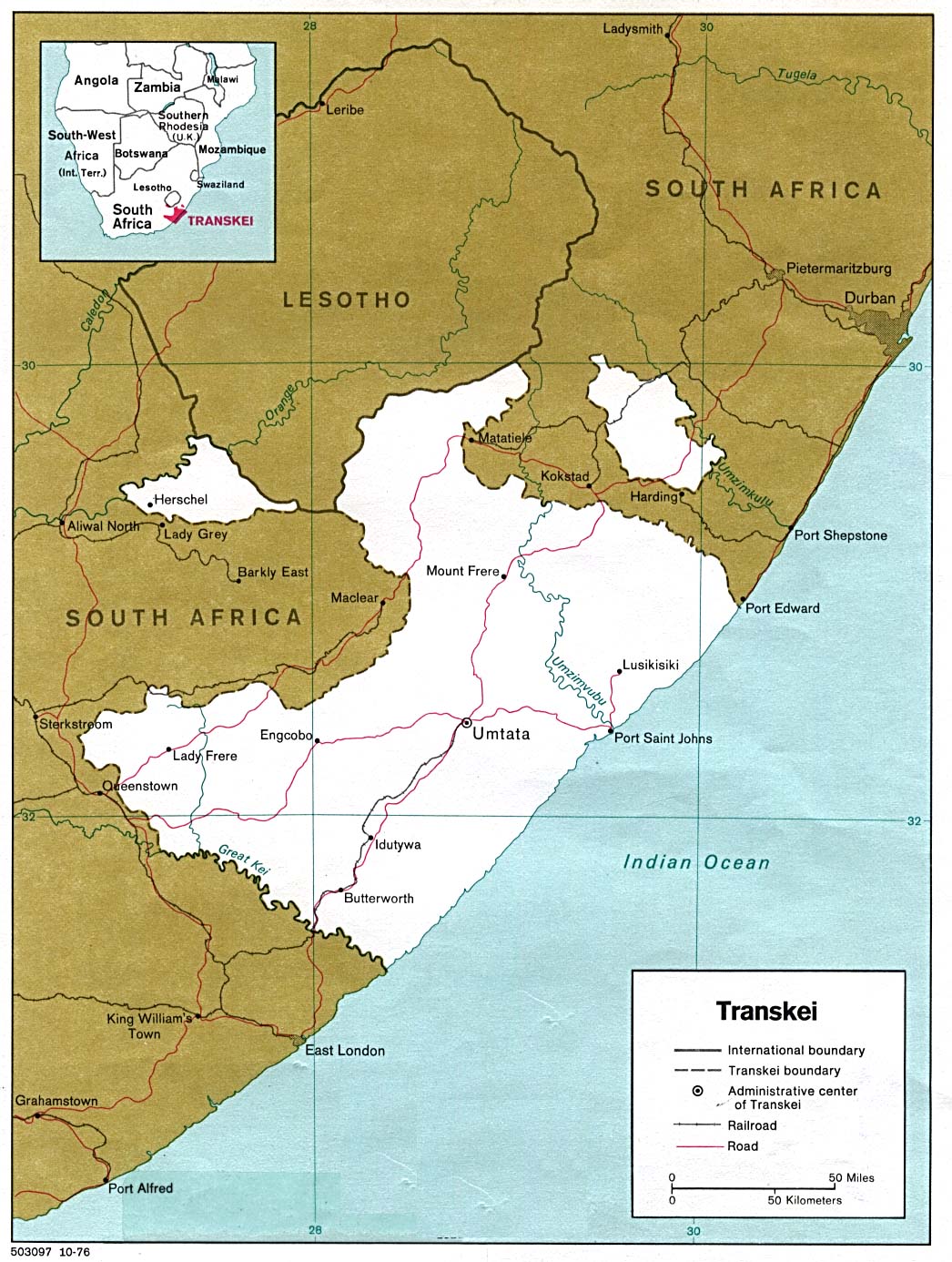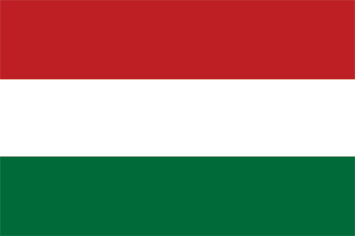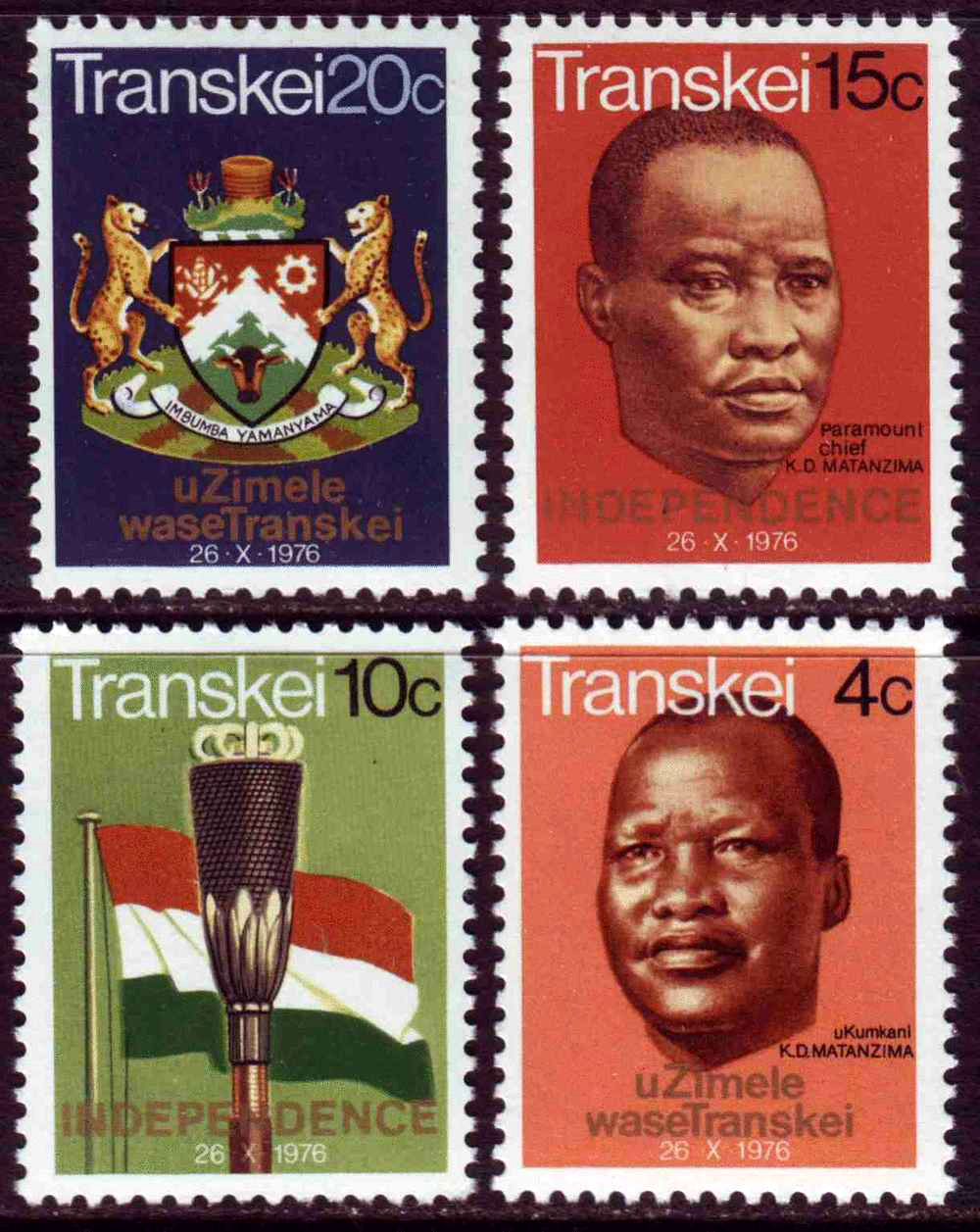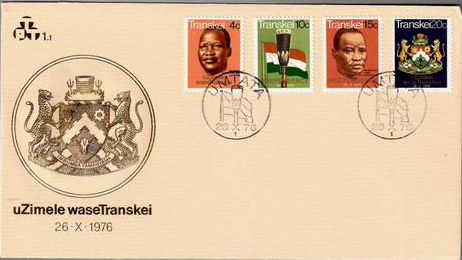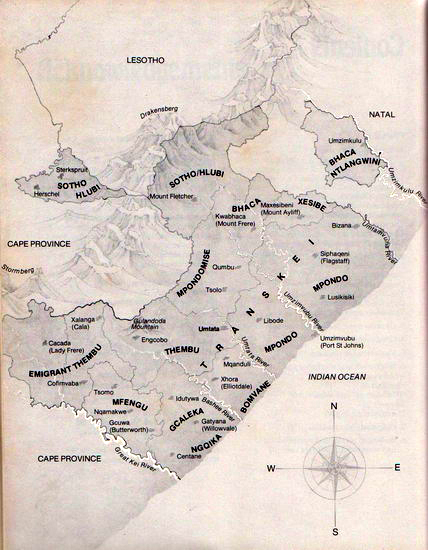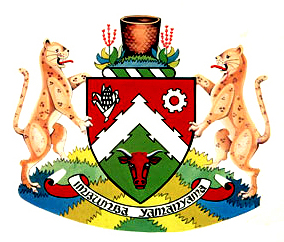
Transkei the First Homeland
to be Given Independence
Transkei lies between
Natal and the Kei River, and is an area traditionally inhabited by
Xhosa-speaking peoples. In 1913 Transkei was the largest single
continuous region to be declared a reserve, or homeland, under the Natives Land Act.
The Promotion of Bantu Self-Government Act No 46 of 1959 allowed for the
transformation of reserves into fully-fledged independent Bantustans. In 1963 the Transkei
Constitution Act created a legislative body, based in Umtata, as the
first step to self-governance, with Kaiser Daliwonga Matanzima as the
country's chief minister.
Adoption of a coat of arms
The Transkei Official Gazette
(Vol. 8 No. 2) of January 1971 notified the adoption of a coat of arms for
Transkei that had been registered in terms the South African Heraldry Act
(Act No. 18 of 1962) as approved in Government Notice 1319 of the Government
Gazette (No. 2728 of 25 September 1970). In terms of this notice, a
Certificate of Registration (no. 410) was issued on 25 September 1970.
The official description of the Arms:
Arms: Per chevron Ochre and Vert, a chevron dovetailed between in chief
dexter a mealie cob and sinister a cogwheel Argent, and in base a bull's
head caboshed proper.
Crest: On a mount Vert a wicker basket between two aloes proper.
Wreath: Argent and Vert.
Supporters: Two leopards proper.
Motto: IMBUMBA YAMANYAMA (Unity is Strength)

Transkei flag - description
Section 4 of the Transkei Constitution Act of 1963, an Act of the South
African Parliament, made provision for the adoption of a Transkeian national
flag. The design of the Transkei flag is set out in section 2 of the
Transkei Flag Act of 1966, which reads as follows:
"The Transkeian flag shall be a flag consisting of three horizontal stripes
of equal width from top to bottom ochre-red, white and green. The width of
the Transkeian flag shall be equal to two-thirds of the length".
The flag was adopted on 20 May 1966 and was officially hoisted for the first
time on (South Africa's) Republic Day, 31 may 1966. It was retained
unchanged when the Republic of Transkei came into being on 26 October 1976.
The red-ochre in the flag is derived from the colour of the soil or "Im-bola"
from which traditional huts are built. It is also the colour of traditional
blankets, while white stands for peace and the green represents the rolling
hills of the countryside, which provides important grazing for cattle which
play an important role in Xhosa culture.
The adoption of this flag was not without opposition and The Flag Bulletin,
XV, 5, September/October 1976, gives an interesting account of the debate.
For the independence ceremonies held on 26 October 1976, special flags in
the national colours were hoisted. These had the Transkei Arms in the centre
of a plain field - in white on green and ochre bunting and in green on white
bunting. These did not replace the flag in any way. Transkei was
re-incorporated into South Africa on 27 April 1994 and is now part of the
Eastern Cape province. Since then the flag is no longer in official use.
Bruce Berry, 01 Dec 1998
I noticed that you wrote "no longer in official use" (while other homeland
flags are simply no more in use). Is it just for a change, or do you mean
that the flag still has some kind of representativity? I had a feeling that
Transkei was more individualized and "real" than most other homelands
(especially after former dictator Kaiser Matanzima, if I remember his name
correctly, turned his back to South African officials after a disagreement
on boundary matters...).
Than Tam Le, 01 Dec 1998
